Windows has been shipped with a Control Panel, which many of you know. This allows you to control and manage different elements of the operating system, such as network configuration, system hardware, installing and uninstalling software, and much more. The Control Panel has been integrated into Windows since the very beginning, when it was launched in 1985, and has been included in all Windows versions.
However, drastic changes have been made to it to support more manageability and its interface. In Windows 8, Microsoft began shifting some controls from the Control Panel to the new “PC Settings app” which had a richer vibe with a user-friendly interface. The changes continue to Windows 10 and Windows 11, as Microsoft plans to ditch the Control Panel and shift all controls to the Settings app.
That said, the Control Panel still plays a significant role in the Windows operating system as many configurations are still handled through it. In this post, we are going to discuss what the Control Panel consists of and how you can quickly access the individual applets through the command line.
Table of Contents
What are Control Panel Applets
Applets, or small applications, are pieces of tiny software within a bigger software that form up to create the parent software. An application, such as the Control Panel, can consist of multiple applets, each capable of handling different aspects of the operating system.
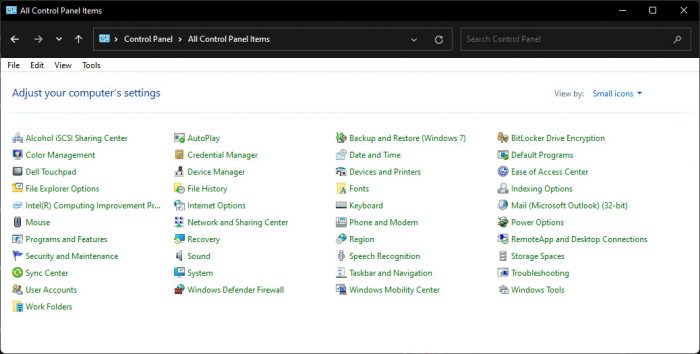
What are CPL Files
CPL files are Control Panel Files are binary-coded files that are responsible for running the different applets inside the Control Panel. These can be found at the following path inside your OS:
C:\Windows\System32

Note: Since these are system files, we suggest you steer clear of them and do not make any modifications, as deleting or renaming them will remove the respective applet from the Control Panel.
The locations of these CPL files are stored at the following locations within the Windows Registry:
Computer\HKLM\Software\Microsoft\Windows\CurrentVersion\Control Panel\Cpls
Whereas the locations of the Class ID (CLSID) variables for the Control Panel applets that do not have a dedicated CPL file are saved at the following location within the Windows Registry:
Note: Control Panel applets with no CPL files have been discussed further down the article where you will also find the canonical names for them.
Computer\HKLM\Software\Microsoft\Windows\CurrentVersion\Explorer\ControlPanel\Namespace
You can open these applets quickly through the Windows Command Line Interface (CLI) simply through the file names discussed further down this post. There are 18 CPL files by default (Windows 11). However, older Windows versions may likely have more, since they do not include the Settings app, and most Controls are still present in the Control Panel.
Furthermore, third-party applications can also add their own .CPL files as applets, so they can be managed through the Control Panel. An example of this can be seen in the image above, where “AxSWindCx64.cpl” is an applet by “Alcohol iSCSI Sharing Center”.
How to Open Control Panel Applets (CPL Files) in Windows
Control Panel files can be opened using Windows CLI. This is a quick and handy method we often use ourselves to quickly access certain components of the Control Panel. Using the Command Prompt, Windows PowerShell, or even the Run dialog box (Windows Key + R Shortcut keys), you can enter the name of the CPL file that you want to run to open them.
Furthermore, you can also type in the name of the CPL file in the Start menu to run it, or simply navigate to the System32 folder using File Explorer and double-click on the CPL file you want to run.
Note: The names and the details of the different CPL files have been discussed in the next section which you can use to open the applets directly.
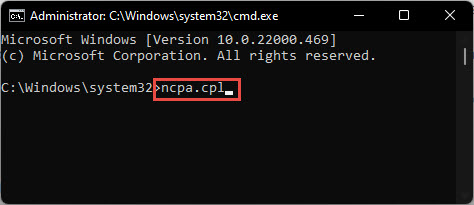
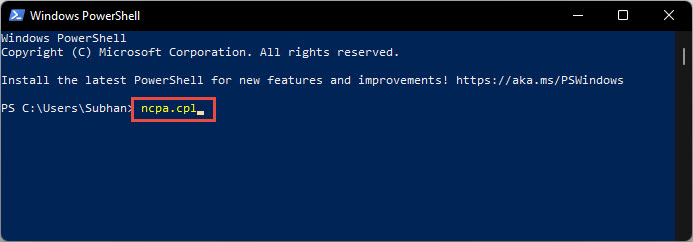
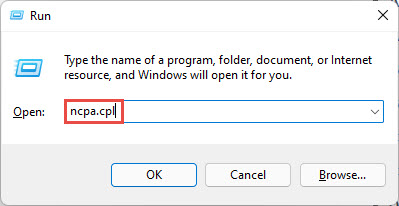
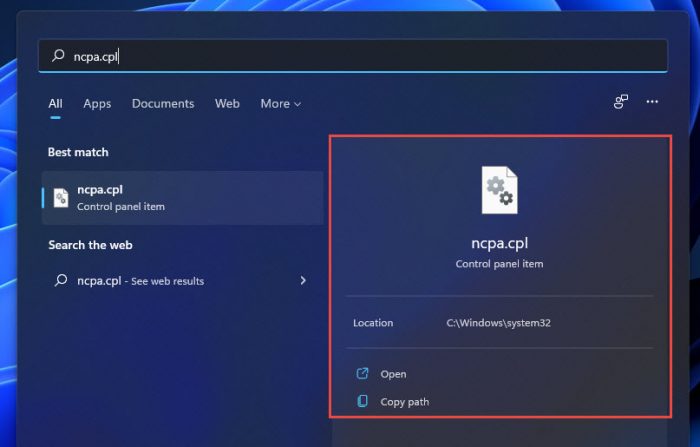
It doesn’t end here. There are certain applets in Windows that do not have a dedicated CPL file. Instead, they are saved in a folder or a DLL file. They can be accessed using their canonical names. Using these, you can open a page inside a Control Panel file directly without having to navigate through it. Here is an example:
control /name Microsoft.RemoteAppAndDesktopConnectionsUsing the command above, you can access the RemoteApp and Desktop Connections page inside the Control Panel directly through the Command Prompt, PowerShell, and the Run box. However, this will not work through the Start Menu as there are no respective files to run.
This can also be combined with the “/page” parameter that will allow you to open a specific step inside the Control Panel. Here is an example:
control /name Microsoft.PowerOptions /page pagePlanSettingsEntering this command will directly open the “Edit plan settings” inside Power Options Control Panel. We have also provided a list of the canonical names you can use in Windows further down this post.
Now that you know how to open these Control Panel applets, let’s move on to the list of commands you can use in Windows to open the respective applet.
Complete List of Control Panel Applets
Control Panel Applets with CPL Files
Below we have listed the details of the different Control Panel applets and their names in Windows:
Note: Some of these applets may have been replaced with their respective page in the Settings app for Windows 11 and 10. However, we have still added them to the list as they are still valid for older versions of Windows.
| Applet Name | File Name | Details |
|---|---|---|
| Add or Remove Programs | appwiz.cpl | This opens the Uninstall a Program applet. Used to uninstall installed programs, or add or remove features from Windows. |
| Date and Time | timedate.cpl | Opens the Date and Time applet. Allows you to set a date and time, change the time zone, add additional clocks, and sync with internet time. |
| Device Manager | hdwwiz.cpl | The Device Manager lists all installed hardware. Used to install and remove devices, manage drivers, and more. |
| Display | desk.cpl | Display provides you with options to configure display-related settings, such as the color profile, scaling, resolution, etc. |
| Firewall | firewall.cpl | Opens the Windows Firewall. Turn it on or off, and open the advanced settings to block or allow connections. |
| Infrared | irprops.cpl | Lets you manage infrared devices if supported on the device. |
| Internet Options | inetcpl.cpl | Opens the classic Internet Options window. Manage internet settings that Internet Explorer, Microsoft Edge, and other browsers may use. |
| Game Controllers | joy.cpl | Manage game controllers connected to the computer. |
| Mouse | main.cpl | The mouse controls enable you to change mouse icons, button behavior, wheel scrolling, mouse sensitivity, and more. |
| Network Connections | ncpa.cpl | Lists all known network connections and their status. Can be used to manage the different network cards on your device. |
| Power | powercfg.cpl | Opens the Power Options. Set a power plan, and customize it. |
| Region | intl.cpl | The Region control panel applets lets you change date and time formats, your location, and the locale. |
| Sound | mmsys.cpl | The Sound properties list all playback and recording devices, options to configure them, manage sound levels, and other communication devices. |
| System Properties | sysdm.cpl | System Properties lets you manage remote connections, computer’s name and domain, and links to other critical Control Panel files. |
| Tablet PC | tabletpc.cpl | Allows you to manage certain settings while running in tablet PC mode. |
| Location Information | telephon.cpl | Set your country, area code, carrier code, and dial numbers for telephony and modem services. |
| Security and Maintenance | wscui.cpl | Manage Security and Maintenance related features such as User Account Controls, firewall, Windows Security components, and much more. |
| Bluetooth Authentication Agent | bthprops.cpl | This file is responsible for authenticating Bluetooth connections with the device. Windows 8: Opens Devices Settings app Windows 7: Opens the Bluetooth Devices list under Devices and Printers. Windows Vista: Opens the Control Panel applet called Bluetooth Devices. |
If you want to open the parent Control Panel, simply type in control in the Run box, Command Prompt, or Windows PowerShell.
Control Panel Applets without CPL Files
We have listed the details for the CPL files commonly found on a Windows PC. However, you can also use the canonical names of certain Control Panel applets, which will take you directly to a certain Control Panel page, for which no CPL files are available. Here are the details:
Note: Some of these applets may have been deprecated for Windows 11 and 10. However, we have still added them as they may still be valid for older Windows versions.
| Applet Name | Canonical Name |
|---|---|
| Action Center | Control /Name Microsoft.ActionCenter |
| Administrative Tools | Control /Name Microsoft.AdministrativeTools |
| AutoPlay | Control /Name Microsoft.AutoPlay |
| Biometric Devices | Control /Name Microsoft.BiometricDevices |
| BitLocker Drive Encryption | Control /Name Microsoft.BitLockerDriveEncryption |
| Color Management | Control /Name Microsoft.ColorManagement |
| Credential Manager | Control /Name Microsoft.CredentialManager |
| Date and Time | Control /Name Microsoft.DateAndTime |
| Default Programs | Control /Name Microsoft.DefaultPrograms |
| Device Manager | Control /Name Microsoft.DeviceManager |
| Devices and Printers | Control /Name Microsoft.DevicesAndPrinters |
| Display | Control /Name Microsoft.Display |
| Ease of Access Center | Control /Name Microsoft.EaseOfAccessCenter |
| Family Safety | Control /Name Microsoft.ParentalControls |
| File History | Control /Name Microsoft.FileHistory |
| Folder Options | Control /Name Microsoft.FolderOptions |
| Fonts | Control /Name Microsoft.Fonts |
| HomeGroup | Control /Name Microsoft.HomeGroup |
| Indexing Options | Control /Name Microsoft.IndexingOptions |
| Infrared | Control /Name Microsoft.Infrared |
| Internet Options | Control /Name Microsoft.InternetOptions |
| iSCSI Initiator | Control /Name Microsoft.iSCSIInitiator |
| iSNS Server | Control /Name Microsoft.iSNSServer |
| Keyboard | Control /Name Microsoft.Keyboard |
| Language | Control /Name Microsoft.Language |
| Location Settings | Control /Name Microsoft.LocationSettings |
| Mouse | Control /Name Microsoft.Mouse |
| MPIOConfiguration | Control /Name Microsoft.MPIOConfiguration |
| Network and Sharing Center | Control /Name Microsoft.NetworkAndSharingCenter |
| Notification Area Icons | Control /Name Microsoft.NotificationAreaIcons |
| Pen and Touch | Control /Name Microsoft.PenAndTouch |
| Personalization | Control /Name Microsoft.Personalization |
| Phone and Modem | Control /Name Microsoft.PhoneAndModem |
| Power Options | Control /Name Microsoft.PowerOptions |
| Programs and Features | Control /Name Microsoft.ProgramsAndFeatures |
| Recovery | Control /Name Microsoft.Recovery |
| Region | Control /Name Microsoft.RegionAndLanguage |
| RemoteApp and Desktop Connections | Control /Name Microsoft.RemoteAppAndDesktopConnections |
| Sound | Control /Name Microsoft.Sound |
| Speech Recognition | Control /Name Microsoft.SpeechRecognition |
| Storage Spaces | Control /Name Microsoft.StorageSpaces |
| Sync Center | Control /Name Microsoft.SyncCenter |
| System | Control /Name Microsoft.System |
| Tablet PC Settings | Control /Name Microsoft.TabletPCSettings |
| Taskbar and Navigation | Control /Name Microsoft.Taskbar |
| Troubleshooting | Control /Name Microsoft.Troubleshooting |
| TSAppInstall | Control /Name Microsoft.TSAppInstall |
| User Accounts | Control /Name Microsoft.UserAccounts |
| Windows Anytime Upgrade | Control /Name Microsoft.WindowsAnytimeUpgrade |
| Windows Defender | Control /Name Microsoft.WindowsDefender |
| Windows Firewall | Control /Name Microsoft.WindowsFirewall |
| Windows Mobility Center | Control /Name Microsoft.MobilityCenter |
| Windows To Go | Control /Name Microsoft.PortableWorkspaceCreator |
| Windows Update | Control /Name Microsoft.WindowsUpdate |
| Work Folders | Control /Name Microsoft.WorkFolders |
You can now run these canonical names to open the respective Control Panel applets or concatenate the “/page” parameter to open a page within the applet directly.
Control Panel Applets with Standalone Executable Files
Some Control Panel applets, which do not have a CPL file, have an executable (.exe) file instead. These can be launched directly using Windows CLI. Below is a list of the applets and their associated cmdlets, which will open without having to use any prefixes:
| Applet Name | File Name |
|---|---|
| Add a Device wizard | DevicePairingWizard |
| Add Hardware wizard | hdwwiz |
| Windows To Go | pwcreator |
| Work Folders | WorkFolders |
| Performance Options (Visual Effects) | SystemPropertiesPerformance |
| Performance Options (Data Execution Prevention) | SystemPropertiesDataExecutionPrevention |
| Presentation Settings | PresentationSettings |
| System Properties (Computer Name) | SystemPropertiesComputerName |
| System Properties (Hardware) | SystemPropertiesHardware |
| System Properties (Advanced) | SystemPropertiesAdvanced |
| System Properties (System Protection) | SystemPropertiesProtection |
| System Properties (Remote) | SystemPropertiesRemote |
| Windows Features | OptionalFeatures OR rundll32.exe shell32.dll,Control_RunDLL appwiz.cpl,,2 |
Control Panel Applets with RunDLL32 Accessibility
As mentioned, some Control Panel applets are saved in DLL files. Here is a list of the applets alongside their respective cmdlets to run them:
| Applet Name | RunDLL Cmdlet |
|---|---|
| Add a Printer Wizard | rundll32.exe shell32.dll,SHHelpShortcuts_RunDLL AddPrinter |
| Additional Clocks | rundll32.exe shell32.dll,Control_RunDLL timedate.cpl,,1 |
| Date and Time (Additional Clocks) | rundll32.exe shell32.dll,Control_RunDLL timedate.cpl,,1 |
| Desktop Icon Settings | rundll32.exe shell32.dll,Control_RunDLL desk.cpl,,0 |
| File Explorer Options (View tab) | rundll32.exe shell32.dll,Options_RunDLL 7 |
| File Explorer Options (Search tab) | rundll32.exe shell32.dll,Options_RunDLL 2 |
| Internet Properties (Security tab) | rundll32.exe shell32.dll,Control_RunDLL inetcpl.cpl,,1 |
| Internet Properties (Privacy tab) | rundll32.exe shell32.dll,Control_RunDLL inetcpl.cpl,,2 |
| Internet Properties (Content tab) | rundll32.exe shell32.dll,Control_RunDLL inetcpl.cpl,,3 |
| Internet Properties (Connections tab) | rundll32.exe shell32.dll,Control_RunDLL inetcpl.cpl,,4 |
| Internet Properties (Programs tab) | rundll32.exe shell32.dll,Control_RunDLL inetcpl.cpl,,5 |
| Internet Properties (Advanced tab) | rundll32.exe shell32.dll,Control_RunDLL inetcpl.cpl,,6 |
| Mouse Properties (Pointers tab 1) | rundll32.exe shell32.dll,Control_RunDLL main.cpl,,1 |
| Mouse Properties (Pointer Options tab 2) | rundll32.exe shell32.dll,Control_RunDLL main.cpl,,2 |
| Mouse Properties (Wheel tab 3) | rundll32.exe shell32.dll,Control_RunDLL main.cpl,,3 |
| Mouse Properties (Hardware tab 4) | rundll32.exe shell32.dll,Control_RunDLL main.cpl,,4 |
| Screen Saver Settings | rundll32.exe shell32.dll,Control_RunDLL desk.cpl,,1 |
| Set Program Access and Computer Defaults | rundll32.exe shell32.dll,Control_RunDLL appwiz.cpl,,3 |
| Sound (Recording tab) | rundll32.exe shell32.dll,Control_RunDLL mmsys.cpl,,1 |
| Sound (Sounds tab) | rundll32.exe shell32.dll,Control_RunDLL mmsys.cpl,,2 |
| Sound (Communications tab) | rundll32.exe shell32.dll,Control_RunDLL mmsys.cpl,,3 |
Third-Party Control Panel Applets
As we already mentioned, some third-party applications come with their own Control Panel applets and CPL files. We cannot list them all, but here are a few common ones:
| Application | File Name | Details |
|---|---|---|
| AC3 Filter | ac3filter.cpl | Configures speaker configuration and other parameters of the AC3 decoder filter. |
| Adobe Gamma | Adobe Gamma.cpl | For altering the screen display with Adobe Systems Imaging Software such as Photoshop. |
| Adobe Version Cue CS2 | VersionCueCS2.cpl | To configure Adobe Version Cue. |
| Application paths | apppaths.cpl | Sets application paths, start-up commands, and system services. |
| ATI DVD Player | QISWCINE.CPL | Changes settings for your DVD decoding. |
| AudioHQ | AudHQ.cpl | Creative Labs Soundblaster Audio HQ. |
| Autodesk Plotter Manager | plotman.cpl | Adds, removes, and changes plotters properties for AutoCAD products. |
| AvantGo Connect | agcpl.cpl | Synchronizes mobile versions (called “channels”) of websites to a smartphone or PDA. |
| Avira AntiVir PersonalEdition | avconfig.cpl | Configures Avira Antivirus program. |
| BACKPACK Finder | bpcpl.cpl | To configure the Micro Solutions BackPack CD driver. |
| BDE Administrator | bdeadmin.cpl | To configure the Borland Database Engine. |
| Broadcom Advanced Control Suite | BACSCPL.cpl | Enables Broadcom network cards testing and diagnostics. |
| CD/DVD Drive Acoustic Silencer | TOSCDSPD.cpl | Configures the rotation speed of CD/DVD drives for Toshiba devices. |
| ClearCase | cc.cpl | To configure IBM Rational ClearCase. |
| Color Settings | 3dcc.cpl | Changes the look and feel of Windows. |
| Compaq Diagnostics | cpqdiag.cpl | To view information on a computer’s hardware and software configuration. |
| Control Panel | controlp.cpl | Control Panel Customization Toy. |
| Control Version System | cvsnt.cpl | Control Panel Customization Toy. |
| Creative Element Power Tools | To configure Creative Element Power Tools. | |
| Corel Versions | verscpl.cpl | Configures Corel versions. |
| DANS | danetsvc.cpl | Configures the Shaffer Solutions DiskAccess Network Services, and NFS client for Windows. |
| Diagnostics for Windows | cpqdiag.cpl | HP Diagnostics for Windows. |
| Digidesign ElevenRack | DigidesignElevenRackControlPanelApplet.cpl | Launch Eleven Rack Control Panel |
| DiskAccess | dacfg.cpl | Configures how the Shaffer Solutions DiskAccess makes connections to remote NFS servers. |
| DS18x Applet | DS18xCPL.cpl | MR Soft DS18x Temperature Logging Service. |
| Flash Player | FlashPlayerCPLApp.cpl | For changing settings for the Flash Player. |
| Folder size | FolderSize.cpl | Folder Size for Windows shows the size of folders in Windows Explorer. |
| FirebirdSQL Service Manager | fmmgr.cpl | Configures Firebird (database server) service options. |
| HP Jetadmin | jetadmin.cpl | HP Jetadmin configures and monitors HP printers. |
| HP Lock | Hplock.cpl | A Windows 95 utility to lock the PC keyboard, mouse, and the on/off switch in one click on legacy HP Vectra. |
| IconPackager | ipcpl.cpl | To customize Windows icons and cursors. |
| ImDisk Virtual Disk Driver | imdisk.cpl | Administration of ImDisk Virtual Disk Driver. |
| InstallShield Update Manager | isuspm.cpl | The InstallShield Update Manager allows users to receive program updates and messages from software makers who use the service. |
| Intel Extreme Graphics | igfxcpl.cpl | To change advanced settings on systems using Intel GPUs. |
| Intel Product Improvement Program | executable | Installed with Intel Driver Update Utility version 2.4 (on Vista and up). |
| IP Office Voicemail Pro | ims.cpl | To configure Avaya IP Office Voicemail Pro. |
| Java | jpicpl32.cpl | For changing settings with Java Runtime Console. |
| JInitiator [VersionNumber] | plugincpl1[VersionNumber].cpl | To configure Oracle’s JInitiator. |
| MLCFG32.cpl | Launches the Microsoft Outlook Profile Manager. | |
| MSConfig | MSConfig.cpl | Launches the Microsoft System Configuration Utility. |
| Multi-finger | ETDUI.cpl | Customize the Smart-Pad Multi-finger Setting. |
| MultiSite | ms.cpl | To configure IBM Rational ClearCase Multisite. |
| Nero BurnRights | NeroBurnRights.cpl | For specifying who is allowed to use the CD burner with Nero. |
| nVIDIA Control panel | nvidia.cpl | To change advanced settings on systems using Nvidia GPUs. |
| Panda Media Booster | PMB.cpl | Panda Media Booster cache and network settings. |
| Parallel Port Joysticks | PPjoy.cpl | Configures Joysticks connected on the Parallel Port. |
| Pointer Devices | tbctlpnl.cpl | To configure the Touch-Base Universal Pointer Device Driver (UPDD). |
| QuickTime | quicktime.cpl | For specifying settings of the Apple QuickTime Player. |
| RealPlayer | prefscpl.cpl | To configure the RealPlayer preferences, older versions. |
| Realtek AC97 Audio Control Panel | alsndmgr.cpl | To configure the Realtek audio controller. |
| Realtek HD-Audio Manager | RTSnMg64.cpl | To launch the Realtek HD-Audio Manager. |
| RESTrick Control Panel | rest2.cpl | Windows Tuning and system restrictions setup. |
| Safarp | safarp.cpl | Safarp is a small and fast alternative to the Add or Remove Programs applet. |
| ScrewDrivers Client | sdclient.cpl | Remote desktop print management solution. |
| Send To Toyssendtotoys.cplTo configure the “Send To” option in the Context Menu in Windows. | ||
| Services and Devices | pserv.cpl | Manage Windows services and devices, and uninstall applications. |
| Softex OmniPass | scurecpl.cpl | Provides password management capabilities to Windows. |
| SNTP Service | sntpserv.cpl | To manage the SNTP client service. |
| Soundscape | scurecpl.cpl | Adds, removes, or changes settings of Soundscape devices. |
| Startup | startup.cpl | Control programs that run at system start-ups. |
| Startup Disk | Startup Disk.cpl | Boot Camp drivers, when Windows runs on a Mac OS virtual machine. |
| Symantec LiveUpdate | s32lucp2.cpl | Configures the Symantec LiveUpdate update service. |
| System Change Log | scl.cpl | Monitors disks for changes and records a detailed log. |
| System Information | Sancpl.cpl | Launches SiSoftware Sandra utility. |
| System Info for Windows | siw.cpl | Launches the SIW application. |
| Trust-No-Exe | trustnoexe.cpl | Configures the Beyond Logic Trust-No-Exe executable filter. |
| VMware Tools | VMControlPanel.cpl | To configure VMware Tools. |
| WIBU-KEY | wibuke32.cpl | To configure the WIBU-KEY Software Protection. |
| Winlogos | wnlgo.cpl | To change the Windows start-up and shutdown screens in Windows 98 or ME. |
| X-Setup Pro | xqdcXSPApplet.cpl | Launches X-Setup Pro, a Windows tweaker application. |
You can use the above-mentioned file names the same as other CPL files to open them using Windows CLI. However, this will only work if the respective program is installed and/or the CPL file is available on your PC in the correct directory.
How to List All CPL Files
Although we have already listed the CPL files found in Windows, you can obtain a complete list of the available .CPL files by running the following command in Windows PowerShell in case you forget a name:
Get-ChildItem -Path C:\Windows\system32\* -Include *.cpl | Sort-Object -Property Extension | Select-Object -Property Name | Format-Wide -Column 1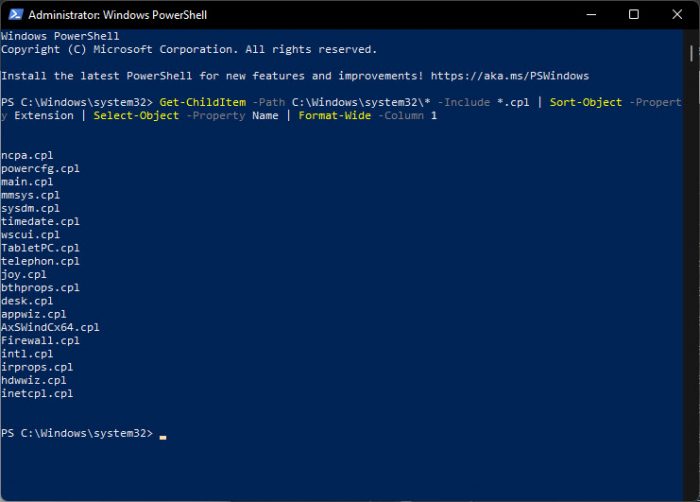
Furthermore, the directory containing the CPL files (System32) also contains all of the Microsoft Saved Console (MSC) files that are used for managing the things which the Control Panel cannot, such as Group Policies, Windows Services, disk management, etc.
Difference Between CPL and MSC Files
Both CPL and MSC files can be found in the same directory in Windows, i.e. C:\Windows\System32. However, both of these file types have different functions.
Control Panel Files are vastly used for OS configurations, such as network card configurations, power management, hardware, attached peripherals, etcetera – things are mostly related to the host device. Whereas the MSC files are mostly used for the rules and policies your device adheres to, and how it behaves.
Microsoft Management Consoles (MMCs) are considered more advanced than the Control Panel as they offer more control and manage the significantly complex aspects of the operating system.
Now that you completely understand what CPL files are and what they do, when do you need them?
When to Open Control Panel Applets using Commands
There may be scenarios where you are unable to access the Control Panel using the Graphical User Interface (GUI). Your mouse may have stopped working and cannot navigate through the control panel when you open the control panel applet with the command line that comes in handy.
Some users may even find it more convenient to access a Control Panel applet by entering the CPL file’s name in the Run box instead of navigating and searching for the Control Panel settings manually.
Final Thoughts
Depending on which version of Windows you are using, you may see more or fewer default CPL files and Control Panel applets than which we have mentioned above in this post. The number of these also depends on the apps and programs on your computer, as third-party applications can also bring in their own CPL files.
With that said, we hope that this article helped you understand the Control Panel files and what each of them is responsible for.
If you believe that we have missed any, do let us know in the comments section so that we may provide better information for our audience.






